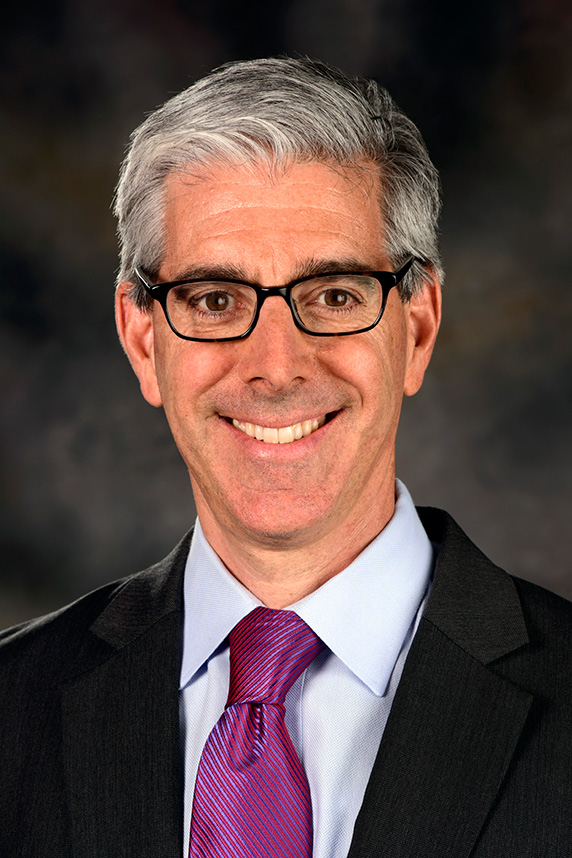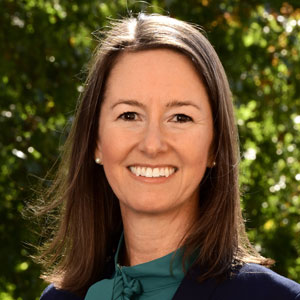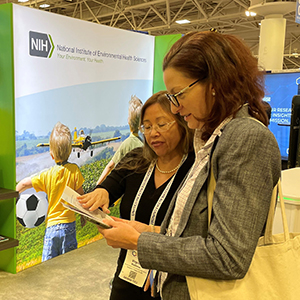At this year's American Public Health Association (APHA) conference, NIEHS presenters spoke about children’s environmental health, disaster response, and climate change and health indicators. The event, held virtually Oct. 24-28, featured a mix of live and on-demand sessions.
 Children’s environmental health is a long-standing research focus of NIEHS. (Photo courtesy of Robert Kneschke/Shutterstock.com)
Children’s environmental health is a long-standing research focus of NIEHS. (Photo courtesy of Robert Kneschke/Shutterstock.com)Public health professionals from across the nation convened to share best practices and hear about the latest research on promoting health and preventing disease.
Children’s environmental health matters
 Thigpen Tart, from the NIEHS Office of Policy, Planning, and Evaluation, serves on the President’s Task Force on Environmental Health Risks and Safety Risks to Children. (Photo courtesy of Steve McCaw)
Thigpen Tart, from the NIEHS Office of Policy, Planning, and Evaluation, serves on the President’s Task Force on Environmental Health Risks and Safety Risks to Children. (Photo courtesy of Steve McCaw)Kimberly Thigpen Tart, J.D., NIEHS health science policy analyst, co-hosted a session on children’s environmental health. Panelists reported the various research findings.
- Geospatial mapping revealed that risk for dental caries in low-income children in Cook County, Illinois, varies according to whether they drink public tap water supplemented with fluoride or water from another source. Molly Martin, M.D., from the Institute for Health Research and Policy in Chicago led the research.
- Childhood lead poisoning in certain California locations was associated with residing close to a highway, even after adjusting for poverty and age of housing.
- Potential indoor air contaminants and associated health risks were assessed in early childhood learning centers in Memphis. The chemical of greatest concern was formaldehyde, a carcinogen and strong-smelling gas used to make particle-board furniture, adhesives, and other products, noted Debra Bartelli, Dr.P.H., from the University of Memphis.
Nsedu Obot Witherspoon, executive director of the Children’s Environmental Health Network, closed with a new report about childhood cancer. Cancer rates among children have increased about 34% since 1975, and cancer remains the leading disease-caused death for children in the U.S., according to the report.
Other findings include links between certain toxic chemicals in consumer products and the environments where children live, learn, and play.
Health concerns from a changing climate
 Balbus said that publication of a manuscript about new climate change and health indicators is planned later this year. (Photo courtesy of Steve McCaw)
Balbus said that publication of a manuscript about new climate change and health indicators is planned later this year. (Photo courtesy of Steve McCaw)John Balbus, M.D., NIEHS senior advisor for public health, discussed a new systematic framework for climate change and health indicators. He raised the possibility of enhancing the existing indicators supported by the U.S. Global Change Research Program. These physical, ecological, or societal observations or estimates are useful for tracking health conditions and trends.
For example, tracking changes in timing and peak concentrations of allergenic pollens may help public health professionals and clinicians better anticipate incidence of pollen-induced asthma.
“To be useful, indicators need to be measurable; broadly available; and clearly associated with specific exposures, their risks, and health outcomes of interest,” said Balbus. People encounter environmental factors in many ways, and a changing climate makes assessments more complex, he noted.
Planning, translating, and reporting research
Thigpen Tart, with Balbus as moderator, also co-hosted a session on science that supports decision-making. Presenters described the following projects.
- Incorporating scientific findings about harm from vaping into adolescent school lessons is an example of research translation(https://www.niehs.nih.gov/research/supported/translational/peph/grantee-highlights/2020/#a887202), described by NIEHS-funded grantee Dana Haine at the University of North Carolina at Chapel Hill.
- Improving how researchers report environmental health data to communities is important to ensure no harm occurs from misunderstanding. NIEHS grant recipient Erin Lebow-Skelley at Emory University published “Identifying Issues and Priorities in Reporting Back Environmental Health Data” with several other colleagues from various institutions.
- Research planning by the U.S. Environmental Protection Agency (EPA) Office of Research and Development is designed to help stakeholders address pressing environmental and health challenges. EPA recently updated its Strategic Research Action Plans for six national research programs.
 Miller noted that DR2 aims to improve disaster research capabilities through policies, infrastructure, training, and stakeholder integration, especially those in academia and affected communities. (Photo courtesy of Steve McCaw)
Miller noted that DR2 aims to improve disaster research capabilities through policies, infrastructure, training, and stakeholder integration, especially those in academia and affected communities. (Photo courtesy of Steve McCaw)Aubrey Miller, M.D., NIEHS senior medical advisor, spoke about the National Institutes of Health (NIH) Public Health Emergency and Disaster Research Response (DR2) Program.
DR2 develops an NIH research infrastructure that supports and facilitates rapid data collection after hurricanes, wildfires, accidental chemical releases, pandemics, and other disasters. This includes DR2 Program efforts to support the COVID-19 Response through quick access to surveys and protocols.
“After disasters happen, governments have ways to respond and help people, but we don’t have a formal way to coordinate and conduct environmental health research,” said Miller. “Despite its importance, health or exposure-related data collection after a disaster is often delayed or missed.”
Periodic training workshops demonstrate that time-critical research can be a vital part of public health response and recovery.
Citations:
Horney JA, Rios J, Cantu A, Ramsey S, Montemayor L, Raun L, Miller A. 2019. Improving Hurricane Harvey disaster research response through academic-practice partnerships. Am J Public Health 109(9):1198–1201.
Lebow-Skelley E, Yelton S, Janssen B, Erdei E, Pearson MA. 2020. Identifying issues and priorities in reporting back environmental health data. Int J Environ Res Public Health 17(18):6742.
Miller A, Yeskey K, Garantziotis S, Arnesen S, Bennett A, O'Fallon L, Thompson C, Reinlib L, Masten S, Remington J, Love C, Ramsey S, Rosselli R, Galluzzo B, Lee J, Kwok R, Hughes J. 2016. Integrating health research into disaster response: the new NIH Disaster Research Response Program. Int J Environ Res Public Health 13(7):676.
(Carol Kelly is managing editor for the NIEHS Office of Communications and Public Liaison.)









